Darwin's Children d-2 Read online
Page 30
Marge Cross gave him five minutes. Jackson noticed her impatience and drew his sidebar to a close. “It’s obvious that ERVs have devised ways to worm themselves into the machinery of their host’s genome. We know of many instances in nature where trying to remove a parasite can kill a host. It’s even likely they’ve created safeguards against removal—pseudogenes, multiple copies, disguised or compressed copies that can be reassembled later, methylation to prevent restriction enzyme activity, all sorts of clever tricks. But the prime proof of the malevolent nature of all retroviruses, even the so-called benevolent or benign, is what HIV and SHEVA have done to our society.”
Kaye looked up from her notes.
“We have a generation of children who can’t fit in,” Jackson continued, “who arouse hatred and suspicion, and whose so-called adaptive characteristics—randomly invoked from a panoply of possible distortions—only cause them distress. Viruses cause us grievous harm. Given time, our group will overcome these unfortunate delays and eliminate all viruses from our lives. Genomic viruses will be nightmares from a rough and nasty past.”
“Is that a conclusion?” Cross asked without letting Jackson’s dramatic effect sink in.
“No,” Jackson said, leaning back in his chair. “Something of an outburst. I apologize.”
Cross looked at the questioners. “Satisfied?” she asked.
“No,” Nilson said, once again with that special Olympian frown Kaye had only seen in older male scientists, winners of Nobel prizes. “But I have a question for Dr. Rafelson.”
“Lars can always be relied upon to keep these sessions lively,” Cross said.
“I’m hoping Dr. Nilson will ask equally probing questions of Kaye,” Jackson said.
“Count on it,” Nilson said dryly. “We realize how difficult it is to work with early-stage embryos in mammals, mice for example, and how much more difficult it is to work with primates and simians. As far as I have been able to review, your lab techniques have been creative and skilled.”
“Thank you,” Kaye said.
Nilson waved this off with another frown. “We also know that there are many ways in which embryos and their hosts, their mothers, work together to prevent rejection of the paternal components of embryonic tissues. Isn’t it possible that by removing known ERVs in chimpanzee embryos, you have also shut down genes crucial to these other protective functions? I am thinking in particular of FasL, triggered by CRH, corticotropin releasing hormone, in the pregnant female. FasL causes cell death in maternal lymphocytes as they move in to attack the embryo. It is essential to getting born.”
“FasL is unaffected by our work,” Kaye said. “Dr. Elizabeth Cantrera, my colleague, spent a year proving that FasL and all other known protective genes remain intact and active after we knock out ERVs. In fact, we’re tracking the possibility now that a LINE element transactivated by the pregnancy hormone in fact regulates FasL.”
“I do not see that in your references,” Nilson said.
“We published three papers in PNAS.” Kaye gave him the citations, and Nilson patiently wrote them down. “The immunosuppressive function of particles derived from endogenous retroviruses is indisputably part of an embryo’s protective armament. We’ve proven that over and over.”
“I’m concerned in particular about evidence that a drop in corticotropin releasing hormone after pregnancy induces rapid expression of ERV responsible for triggering arthritis and multiple sclerosis,” Nilson said. “The ERV in this case are reacting to a sharp drop in hormones, not a rise, and they appear to cause disease.”
“Interesting,” Cross said. “Dr. Rafelson?”
“It’s a reasonable hypothesis. The triggering of autoimmune disorders by ERV is a rich area for research. Such expression could be regulated by stress-related hormones, and that would explain the role such hormones—and stress in general—play in such disorders.”
“Then which is it, Dr. Rafelson?” Nilson asked, his eyes sharp upon her. “Good virus, or bad virus?”
“Like everything else in nature, one or the other or even both, depending on the circumstances,” Kaye said. “Pregnancy is a tough time for both the infant and the mother.”
Cross turned to Sharon Morgenstern. “Dr. Morgenstern showed me some of her questions earlier,” she said. “They are cogent. They are in fact excellent.”
Morgenstern leaned forward and looked at Kaye and Liz. “I will state up front that although I often agree with Dr. Nilson, I do not find Dr. Rafelson’s laboratory procedures free from bias or error. I suspect that Dr. Rafelson came here to prove that something could not be done, not that it could be done. And now we are supposed to believe that she has proven that embryos cannot proceed to live birth, or even grow to pubescence, without a full complement of old viruses in their genes. In short, working backwards, she is trying to prove a controversial theory of virus-based evolution that could conceivably elevate the social status of her own daughter. I am suspicious when such strong emotional motivations are involved in a scientist’s work.”
“Do you have a specific criticism?” Cross asked mildly.
“A number of them, actually,” Morgenstern said. Liz handed Kaye a note. Kaye looked over the quickly scrawled message. Morgenstern published twenty papers with Jackson over the last five years. She’s his contact on the Americol jury.
Kaye looked up and stuffed the note in her coat’s side pocket.
“My first doubt—,” Morgenstern continued.
This was the true beginning of the frontal assault. All that had come before was just the softening up. Kaye swallowed and tried to relax her neck muscles. She thought of Stella, far across the continent, wasting her time in a school run by bigots. And Mitch, driving to rejoin an old lover and colleague on a dig in the middle of nowhere.
For one very bad moment, Kaye felt she was about to lose everything, all at once. But she drew herself up, caught Cross’s gaze, and focused on Morgenstern’s stream of precisely phrased, mind-numbing technicalities.
20
OREGON
They had left the dirt road twenty minutes ago and Mitch still had not seen anything compelling. The game was beginning to wear. He slammed on the brakes and the old truck creaked on its shocks, swayed for a moment, then stalled out. He opened the door and mopped his forehead with a paper towel from the roll he kept under his front seat, along with a squeegee to remove mud.
Dust billowed around them until a stray draft between narrow rills spirited it away.
“I give up,” Mitch said, walking back to stare into Eileen’s window. “What am I supposed to be looking for?”
“Let’s say there’s a river here.”
“Hasn’t been one for a few centuries, by the looks of things.”
“Three thousand years, actually. Let’s go back even further—say, more than ten thousand years.”
“How much more?”
Eileen shrugged and made an “I’m not telling” face.
Mitch groaned, remembering all the troubles that came with ancient graves.
Eileen watched his reaction with a weary sadness that he could not riddle. “Where would you set up some sort of long-term fishing camp, say, during the fall salmon run? A camp you could come back to, year after year?”
“On hard ground above the river, not too far.”
“And what do you see around here?” Eileen asked.
Mitch scanned the territory again. “Mostly mudstone and weak terraces. Some lava.”
“Ash fall?”
“Yeah. Looks solid. I wouldn’t want to dig it out.”
“Exactly,” Eileen said. “Imagine an ash fall big enough to cover everything for hundreds of miles.”
“Broken flats of ash. That would have to be above this bed, of course. The river would have worn through.”
“Now, how would an archaeologist find something interesting in all that confusion?”
He frowned at her. “Something trapped by ash?”
Eileen nodded encouragement
.
“Animals? People?”
“What do you think?” Eileen peered through the dusty windshield of the Tahoe. She looked sadder and sadder, as if reliving an ancient tragedy.
“People, of course,” Mitch said. “A camp. A fishing camp. Covered by ash.” He shook his head, then mockingly smacked his forehead, Such a dummy.
“I’m practically giving it away,” Eileen said.
Mitch turned east. He could see the dark gray-and-white layers of the old ash fall, buried under ten feet of sediments and now topped by a broken wall of pines. The ash layer looked at least four feet thick, mottled and striated. He imagined walking over to the cut and fingering the ash. Compacted by many seasons of rain, held in place by a cap of dirt and silt, it would be rock hard at first, but ultimately frangible, turning to powder if he hit it vigorously with a pick.
Big fall, a long time ago. Ten thousand and more years.
He looked north again, up a wash and away from the broad mud and gravel bed of the long-dead river, spotted with hardy brush and trees, a course now cut off even from snow melt and flash floods. Undisturbed by heavy erosion for a couple of thousand years.
“This used to be a pretty good oxbow, I’d say. Even in the Spent River heyday, there’d have been shallows where you could walk across and spear fish. You could have set up a weir in that hollow, under that boulder.” He pointed to a big boulder mostly buried in old silt and ash.
Eileen smiled and nodded. “Keep going.”
Mitch tapped his lips with his finger. He circled the Tahoe, waving his arms, making swooshing sounds, kicking the dirt, sniffing the air.
Eileen laughed and slapped her knees. “I needed that,” she said.
“Well, shucks,” Mitch said humbly. “If I’m tapping into mystic spirits, I got to act the part.” He fixed his gaze on a gap that led to higher ground, above the ash. His head leaned to one side and he shook out his bad arm, which was starting to ache. He got the look of a hound on the scent. Eyes sweeping the rough ground, he walked up the wash and climbed around the boulder.
Eileen yelled, “Wait up!”
“No way,” Mitch called back. “I’m on it.”
And he was.
He spotted the camp ten minutes later. Eileen came up beside him, breathless. On a level plateau only thinly forested, marked by patches of gray where the deep ash layer had been exposed by erosion, he saw twelve low-slung, light-weather tents covered with netting, dead branches, and bushes uprooted from around the site. A pair of old Land Rovers had been parked together and disguised as a large boulder.
Mitch had taken a seat on a rock, staring glumly at the tents and vehicles. “Why the camouflage?” he asked.
“Satellites or remoters doing searches for the BLM and Army Corps, protecting Indian rights under NAGPRA,” Eileen said. Federal interpretation of the complaints of certain Indian groups, citing NAGPRA—the Native American Graves Protection Act—had been the nemesis of American archaeologists for almost twenty years.
“Oh,” Mitch said. “Why take the chance? Do we need that now? Having the feds cover your dig with concrete?” That was how the Army Corps of Engineers had protected Mitch’s dig against further intrusion, more than a lifetime ago, it seemed now. He waved his hand at the site and made a face. “Not very smart, staying hidden like this, hoping to avoid the Big Boys.”
“Isn’t that what you did?” Eileen asked.
Mitch snorted with little humor. “It’s a fair cop,” he admitted.
“These are not rational times,” Eileen said. “You’ll understand soon enough. Don’t we all need to know what it means to be human? Now more than ever? How we got to where we are, and what’s going to come later?”
“What are a few old Indian bones going to tell us that we don’t already know?” Mitch asked, feeling his sense of discovery start to sputter and stall.
“Would I have called you out here if that was all we had at stake?” Eileen said. “You know me better than that, Mitch Rafelson. I hope you do.”
Mitch wiped his hand on his pants leg and looked over his shoulder at the long fan of the wash. They had climbed about twenty feet, but he could still see evidence of ancient bank erosion. “Big river, way back when,” he said.
“It was smaller at the time of our site,” Eileen said. “Just a broad, shallow stream filled with salmon. Bears used to come down and fish. One of my students found an old male on the other side. Killed by an early phase of the ash fall, stage one of the eruption.”
“How long ago?” Mitch asked.
“Twenty thousand years, we’re estimating. Ash gives a good potassium-argon result. We’re still refining with carbon dating.”
“Something more than just a dead grizzly?”
Eileen nodded like a little girl confirming that there were, indeed, more dolls in her room. “The bear was female. She was missing her skull. It had been cut off, the bones hacked through with stone axes.”
“Twenty thousand years ago?”
“Yeah. So my student crossed the Spent River and started looking at other reveals. Just killing time until the Land Rover came to pick her up. She found an eroded layer of high-silica ash, right down there, about fifty meters from where the camp is now.” Eileen pointed. “She almost stepped on a human toe bone mixed with some gravel. Nothing spectacular, really. But she tracked down where it had weathered out, and she found more.”
“Twenty thousand years,” Mitch said, still incredulous.
“That isn’t the half of it,” Eileen said.
Mitch took a huge leap of supposition and bent backwards, then did a little dip of disbelief. “You are not suggesting…”
Eileen stared at him keenly.
“You found Neandertals?”
Eileen shook her head, a strong no, then rewarded him with a teary-eyed smile that gave some hint of the distress she had gone through, at night, lying awake and thinking things over.
Mitch let out his breath. “What, then?”
“I don’t want to be coy,” she said primly, and took his hand. “But you’re not nearly crazy enough. Come on, Mitch. Let’s go meet the girls.”
21
BALTIMORE
Morgenstern’s questions were spot on and difficult to answer. Kaye had done her best, but she felt she had goofed a few of her responses rather badly. She felt like a mouse in a room full of cats. Jackson appeared more and more confident.
“The fertility group concludes that Kaye Rafelson is not the proper individual to continue research in ERV knock outs,” Morgenstern concluded. “She has obvious bias. Her work is suspect.”
A moment of silence. The accusation was not rebutted; everyone was considering their options and the map of the political minefield around them.
“All right,” Cross said, her face as serene as a baby’s. “I still don’t know where we stand. Should we continue to fund vaccines? Should we continue to look for ways to create organisms without any viral load?” Nobody answered. “Lars?” Cross inquired.
Nilson shook his head. “I am perplexed by Dr. Morgenstern’s statements. Dr. Rafelson’s work looks impressive to me.” He shrugged. “I know for a fact that human embryos implant in their mothers’ wombs with the aid of old viral genes. Dr. Morgenstern is undoubtedly familiar with this, probably more than I.”
“Very familiar,” Morgenstern said confidently. “Utilization of endogenous viral syncytin genes in simian development is interesting, but I can quote dozens of papers proving there is no rhyme or reason to this random occurrence. There are even more remarkable coincidences in the long history of evolution.”
“And the Temin model of viral contributions to the genome?”
“Brilliant, old, long since disproved.”
Nilson pushed his scattered notes and papers into a stack, squared them, and thumped them lightly on the table top. “All my life,” he said, “I have come to regard the basic principles of biology as tantamount to an act of faith. Credo, this I believe: that the chain of instruct
ion arising from DNA to RNA to proteins never reverses. The Central Dogma. McClintock and Temin and Baltimore, among many others, proved the Central Dogma to be wrong, demonstrating that genes can produce products that insert copies of themselves, that retroviruses can write themselves to DNA as proviruses and stay there for many millions of years.”
Kaye saw Jackson regarding her with his sharp gray eyes. He tapped his pencil silently. They both knew Nilson was grandstanding and that this would not impress Cross.
“Forty years ago, we missed the boat,” Nilson continued. “I was one of those who opposed Temin’s ideas. It took us years to recognize the potential of retroviruses to wreak havoc, and when HIV arrived, we were unprepared. We did not have a crazy, creative bouquet of theories to choose from; we had killed them all, or ignored them, much the same. Tens of millions of our patients suffered for our own stubborn pride. Howard Temin was right; I was wrong.”
“I would not call it faith, I’d call it process and reason,” Jackson interrupted, tapping his pencil harder. “It’s kept us from making even more horrible blunders, like Lysenko.”
Nilson was having none of this. “Ah, get thee behind me, Lysenko! Faith, reason, dogma, all add up to stubborn ignorance. Thirty years before that, we had missed the boat with Barbara McClintock and her jumping genes. And how many others? How many discouraged postdocs and interns and researchers? It was prideful, I see now, to hide our weaknesses and spite our fundamentalist enemies. We asserted our infallibility before school boards, politicians, corporations, investors, patients, whomever we thought might challenge us. We were arrogant. We were men, Ms. Cross. Biology was an incredible and archaic patriarchy with many of the aspects of an old boy network: secret signs, passwords, rituals of indoctrination. We held down, for a time at least, some of our best and brightest. No excuses. And once again we failed to see the coming juggernaut. HIV rolled over us, and then SHEVA rolled over us. It turned out we knew nothing whatsoever about sex and evolutionary variation, nothing. Yet some of us still act as if we know it all. We attempt to assess blame and escape our failures. Well, we have failed. We have failed to see the truth. These reports sum up our failure.”

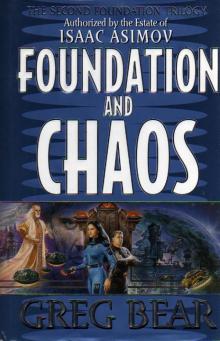 Foundation and Chaos
Foundation and Chaos Halo: Silentium
Halo: Silentium Blood Music
Blood Music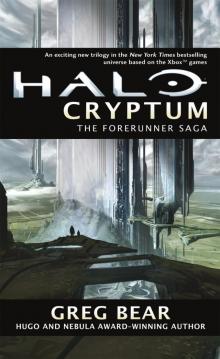 Halo: Cryptum
Halo: Cryptum Halo: Primordium
Halo: Primordium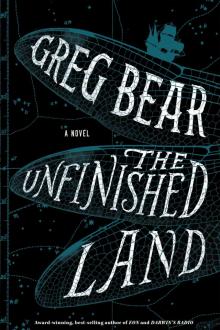 The Unfinished Land
The Unfinished Land Hardfought
Hardfought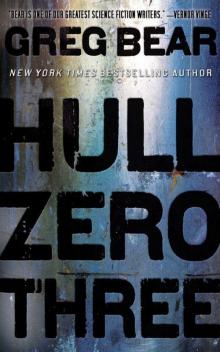 Hull Zero Three
Hull Zero Three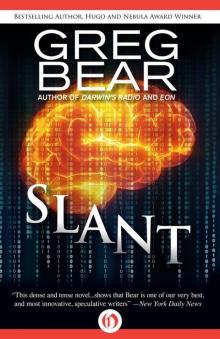 Slant
Slant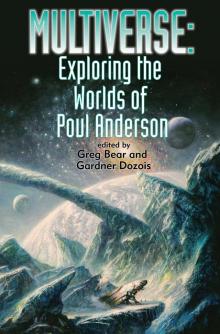 Multiverse: Exploring the Worlds of Poul Anderson
Multiverse: Exploring the Worlds of Poul Anderson Take Back the Sky
Take Back the Sky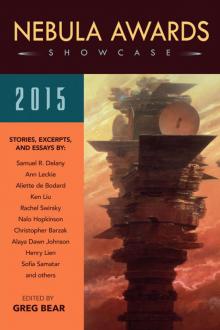 Nebula Awards Showcase 2015
Nebula Awards Showcase 2015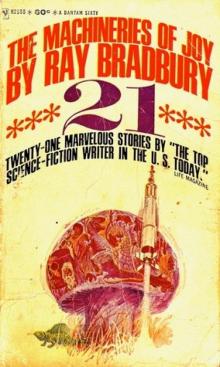 Machineries Of Joy
Machineries Of Joy A Martian Ricorso
A Martian Ricorso Eternity
Eternity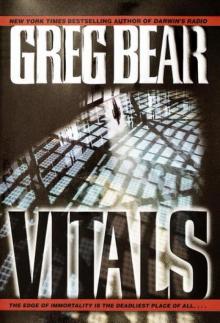 Vitals
Vitals The Infinity Concerto
The Infinity Concerto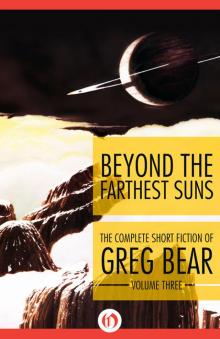 Beyond the Farthest Suns
Beyond the Farthest Suns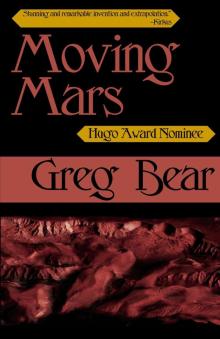 Moving Mars
Moving Mars Quantico
Quantico Darwin's Radio
Darwin's Radio Beyond Heaven's River
Beyond Heaven's River Star Wars - Rogue Planet
Star Wars - Rogue Planet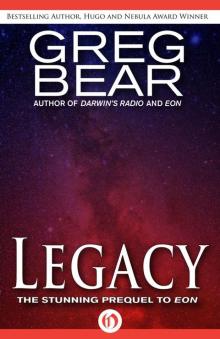 Legacy (Eon, 1)
Legacy (Eon, 1) War Dogs: Ares Rising
War Dogs: Ares Rising Sisters
Sisters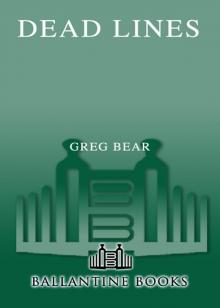 Dead Lines
Dead Lines Just Over the Horizon (The Complete Short Fiction of Greg Bear Book 1)
Just Over the Horizon (The Complete Short Fiction of Greg Bear Book 1) Eon (Eon, 2)
Eon (Eon, 2) Venging
Venging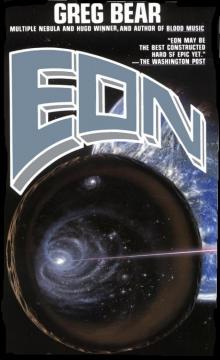 Eon
Eon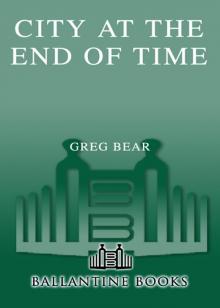 City at the End of Time
City at the End of Time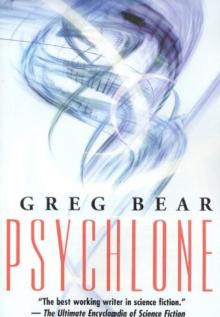 Psychlone
Psychlone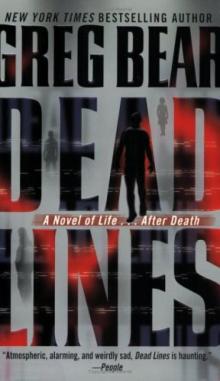 Dead Lines, A Novel of Life... After Death
Dead Lines, A Novel of Life... After Death Eternity (Eon, 3)
Eternity (Eon, 3) Cryptum
Cryptum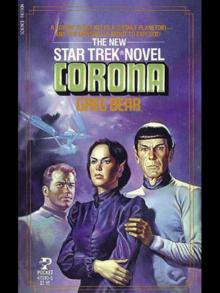 Corona
Corona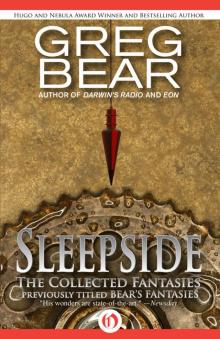 Sleepside: The Collected Fantasies
Sleepside: The Collected Fantasies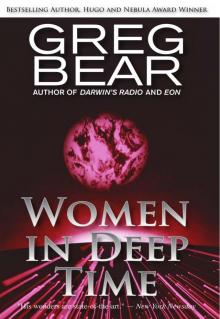 Women in Deep Time
Women in Deep Time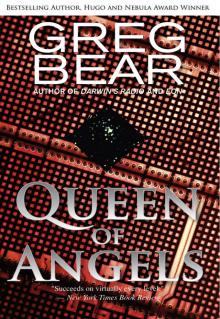 Queen of Angels
Queen of Angels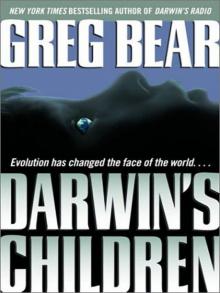 Darwin's Children
Darwin's Children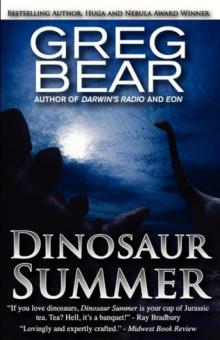 Dinosaur Summer
Dinosaur Summer The Forge of God tfog-1
The Forge of God tfog-1 Foundation and Chaos f-9
Foundation and Chaos f-9 Star Wars: Rogue Planet
Star Wars: Rogue Planet The Forge of God
The Forge of God Mariposa
Mariposa Halo: Cryptum: Book One of the Forerunner Saga
Halo: Cryptum: Book One of the Forerunner Saga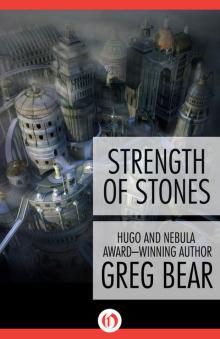 Strength of Stones
Strength of Stones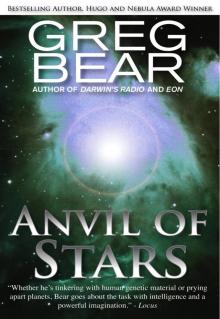 Anvil of Stars
Anvil of Stars B00AQUQDQO EBOK
B00AQUQDQO EBOK Anvil of Stars tfog-2
Anvil of Stars tfog-2 Ares Rising 1: War Dogs
Ares Rising 1: War Dogs Rogue Planet (star wars)
Rogue Planet (star wars) The Machineries of Joy
The Machineries of Joy Far Thoughts and Pale Gods
Far Thoughts and Pale Gods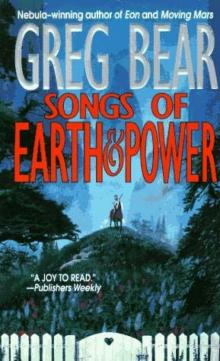 Songs of Earth and Power Omnibus
Songs of Earth and Power Omnibus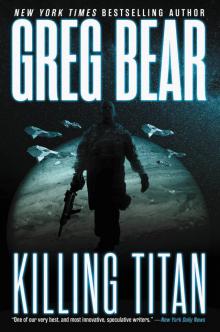 Killing Titan
Killing Titan Darwin's Radio d-1
Darwin's Radio d-1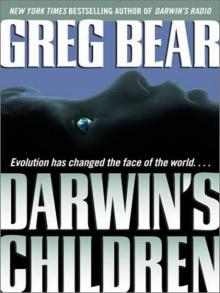 Darwin's Children d-2
Darwin's Children d-2